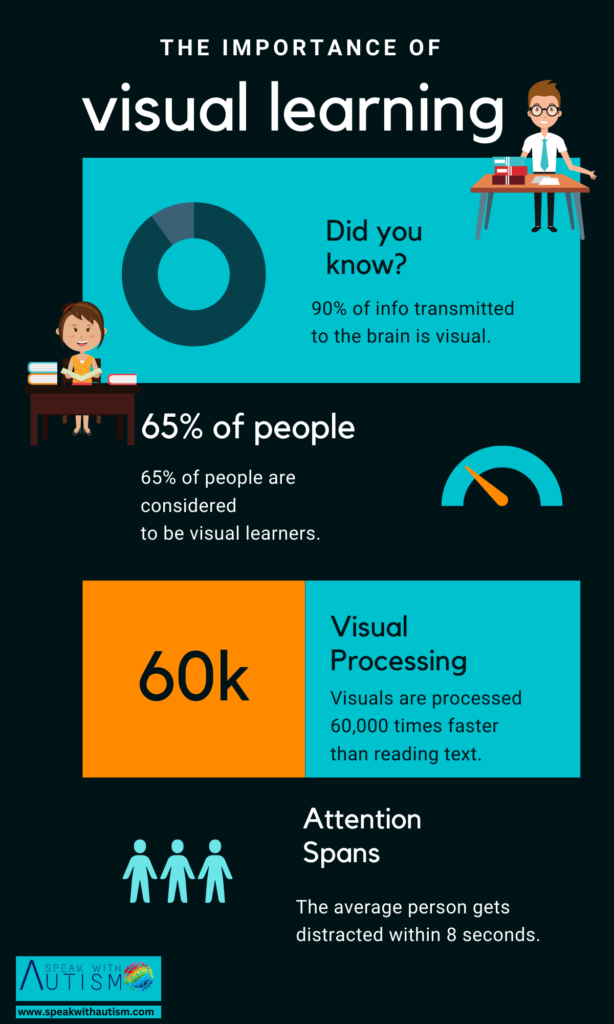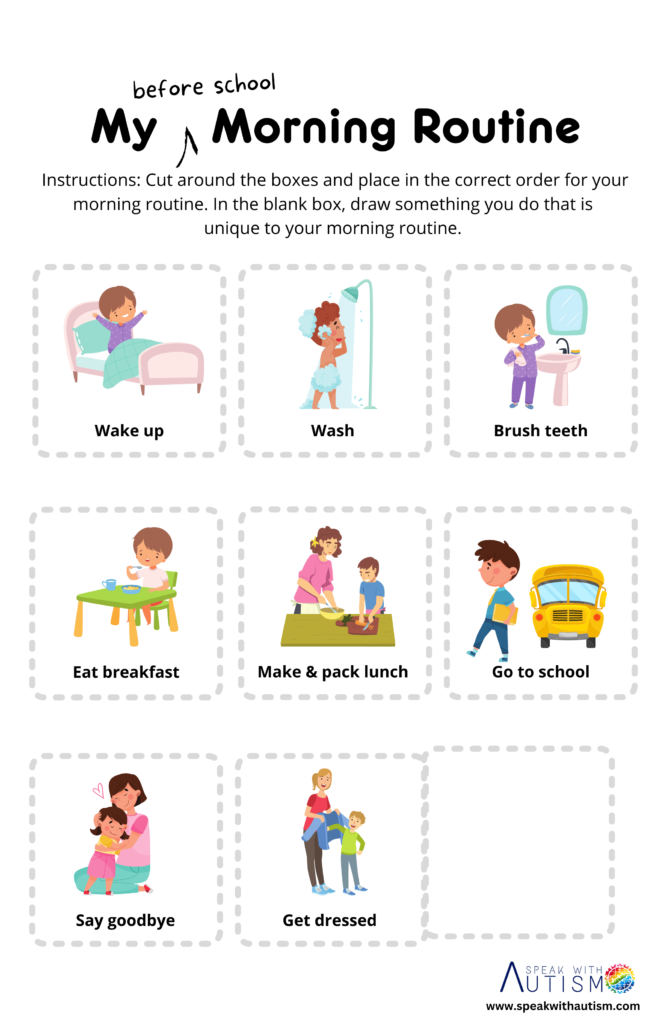Have you noticed that sometimes your child becomes uncomfortable in bright light? Like when he goes out in the sunlight or falls in bright light, he covers his face with his hand, squints, or keeps his head down? Sometimes the child gets confused in differentiating things that are different from each other or gets lost in small details – like a drawing or a small design of a carpet.
Seeing all this, it seems that he is not paying attention to the things around him. Yes, these can be symptoms of Visual Sensory Processing Disorder. We will talk about this disorder in detail and also discuss some activities that you can do at home. These activities will help you deal with this particular issue of your child.
Table of Contents
Visual Sensory Processing Disorder: What is it?
Our vision capacity is very important because we do maximum learning through visuals. When we see something, the signals go to the brain through our eyes. The brain processes those signals and interprets them and accordingly we react to our environment. But if there is a problem in visual sensory processing, the brain either over-processes or cannot process the signals properly.
Hypersensitivity and Hyposensitivity Children with Visual Sensory Processing Disorder
- Hypersensitivity: If the child is hypersensitive, he will notice minute details more. He may get bothered or distracted quickly by bright lights or fluorescent lights.
- Hyposensitivity: If the child is hyposensitive, he needs more visual input. Such children struggle to differentiate between similar-looking objects.
Challenges that children face with Visual Sensory Processing Disorder
Visual Processing Speed
The visual processing speed of such children is slow. It takes them a lot of time to understand and react to things. This is why they struggle in academics and their response time is delayed.
Visual Discrimination
Children get confused in differentiating similar-looking objects, such as letters (B and D), or similar shades (light green and dark green). Solving or arranging puzzles is challenging for them.
Visual Memory
Their visual memory is weak. It is difficult to remember a story or a diagram after seeing it and then explain it. They also have difficulty in recognizing family faces.
Visual-Motor Integration
There is a problem in coordination between visual and body actions. Tasks like catching, throwing, or writing within-lines are challenging for them.
Activities for Visual Sensory Processing to Do at Home
Next, we’ll talk about some activities you can implement at home. These activities will improve your child’s learning curve by catering to his/her sensory needs and improving his/her daily life.

You can do these fun activities at home to deal with Visual Sensory Processing Disorder
You can help children better by adopting some simple and effective activities to improve their visual sensory processing. These activities can prove to be especially helpful in both cases of hypersensitivity and hyposensitivity.
1. Color and Shape Sorting Activity
- Place small objects or toys of different colors and sizes in a bin.
- Ask the child to take out only blue color stars or red round shapes and keep them.
- This activity not only helps in visual discrimination, but also improves their matching and sorting skills.
2. Find It Game
- In a room with limited and simple sensory input, give instructions to children like “bring five black color objects.”
- Gradually complicate the instructions, like “find five round black objects.”
- It strengthens visual processing, discrimination, and the ability to follow instructions.
3. Puzzle Solving
- Start with simple puzzles.
- As the child becomes comfortable, increase the number and size of puzzle pieces.
- This activity enhances visual recognition and problem solving ability.
4. Play with a Gym Ball
- Use a gym ball with the child.
- Roll it, bounce it, or play a light game of throw and catch.
- This activity is helpful in improving visual recognition and distance judgment skills.
5. Target Practice Game
- Take a ball and a tub or bucket.
- Ask the child to throw the ball into the tub.
- Keep the tub stationary to begin with and practice with a moving target later.
- It improves visual motor integration and processing.
6. Flashlight Reading
- Study with a flashlight in a dimly lit room.
- Ask children to read a book while tracking the focus of the flashlight.
- This improves their visual memory and processing speed.
7. Sand Writing
- Ask children to write alphabets on sand, rice, or flour.
- If sand is not available, you can write alphabets on the ground with chalk and ask them to follow.
- This experiential learning strengthens visual and motor skills.
8. Visual Scheduling

- Show the child’s daily routine in small picture boxes.
- For example, brushing teeth, getting ready, etc.
- This is a great way to enhance children’s visual memory.
9. Gradual Exposure to Visual Stimuli
- Expose children to colorful and lively environments gradually. – Start with small colourful toys and later add books, charts, and wallpapers.
- This gradual exposure will reduce their sensory overload.
10. Facial Expression Identification
- Let children practice identifying familiar and unique facial expressions.
- Use flashcards or mirror games for this.
- It helps enhance social communication and emotional connection.
Adjust all these activities according to your child’s level and focus on gradual progress. With love and patience, your child will definitely become better at visual processing.
Frequently Asked Questions
What is Visual Sensory Processing Disorder?
It is a condition in which a child’s eyes function normally, but the brain has difficulty processing visual inputs properly. This can cause the child to be either hypersensitive, where he pays more attention to small details, or hyposensitive, where he needs adequate visual input.
What are the symptoms of visual sensory processing disorder?
1. Discomfort with bright light.
2. Difficulty recognizing objects that look similar.
3. Difficulty solving or putting together puzzles.
4. Poor visual memory, such as not being able to remember things seen.
5. Difficulty with visual motor integration, such as not being able to catch a ball correctly.
How does visual sensory processing disorder affect children’s learning?
A child’s visual processing speed may be slow, which makes it take longer for him to understand things and make sense of them. This slows down his response time and he struggles with academic activities.
Does visual discrimination cause difficulty in social interaction in children?
Yes, the child may have trouble recognizing faces or understanding the surrounding activities. This affects his social relationships and emotional understanding.
Does visual motor integration affect the child’s motor skills?
Yes, the child may have difficulty catching a ball, writing within the line with a pencil, or estimating distance correctly.
